A variety of sessions offer insight and access to HVACR leadership, opportunities, challenges, training and applications.
Did you miss our previous article…
https://www.ab-sessions-plumbing-building-services.com/?p=589
Manhattan Mechanical Services Reaches 10-Year Anniversary Milestone
Chicagoland’s premier merit shop mechanical contractor celebrates a decade of continued growth with the support of dedicated employees and loyal customers.
Did you miss our previous article…
https://www.ab-sessions-plumbing-building-services.com/?p=582
DriSteem Releases New Webinar on Optimizing Agricultural Growth with Correct Relative Humidity Levels
The educational webinar teaches the importance of humidity levels to successfully grow plants indoors.
Did you miss our previous article…
https://www.ab-sessions-plumbing-building-services.com/?p=581
DDI System Announces David Greene as New Director of Business Development
In his new role, Greene is responsible for growing the company’s business in all markets, finding new business opportunities, and helping to build a strong, recognizable brand.
Did you miss our previous article…
https://www.ab-sessions-plumbing-building-services.com/?p=580
How ‘Bots’ Can Change Your Warehouse and DC Lifestyle: Update 2.0
This free webinar will be held Dec. 7 from 1:00 p.m. to 2:00 p.m. EST.
Did you miss our previous article…
https://www.ab-sessions-plumbing-building-services.com/?p=579
Mueller Associates Names Todd Garing President
Garing joined the firm in 1993 and has served as vice president and group manager since 2007.
Did you miss our previous article…
https://www.ab-sessions-plumbing-building-services.com/?p=578
What to Do When Someone Puts Dish Soap in Your Dishwasher
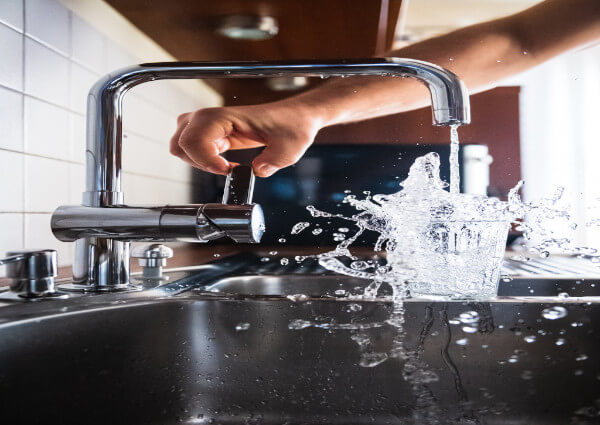
>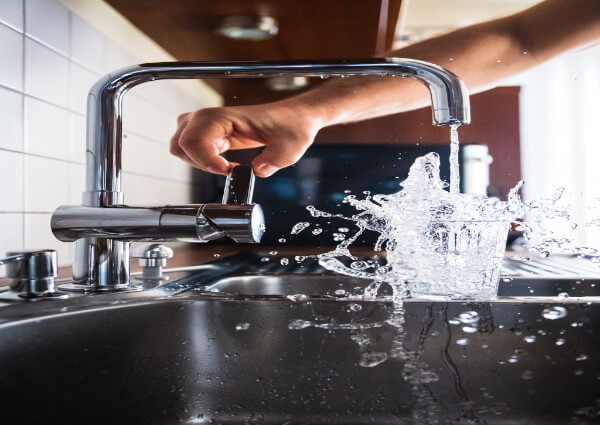
There’s only one main difference between dish soap and dishwashing detergent, but it’s a big one. Dishwashing detergent does not create suds, but dish soap does. The idea of a dishwasher overflowing with bubbles might paint a funny picture but it’s also big, messy problem. If you accidentally put dish soap in dishwasher once, it’s a headache. If it happens more than once, the soap scum build up could eventually damage your dishwasher.
If the worst happens and you find yourself facing an endless soap avalanche, don’t fret. We’ll tell you how to clean out a dishwasher with dish soap in it. More importantly we’ll tell you how to restore your dishwasher to prevent future problems. If your dishwasher doesn’t work properly after these steps, call the pros at Mike Diamond to help.
How to Fix Dishwasher with Dish Soap in It
First things first, stop the dishwasher immediately. Cancel the wash cycle. If you’re lucky, the suds haven’t quite overflowed just yet. The sooner you turn off the dishwasher, the better your chance of keeping the suds out of the machine’s inner workings.
Once you’ve canceled the cycle, your dishwasher should start draining. It won’t clear everything out, but it’ll make the clean-up process a little less damp.
Clean up any overflow.
If you couldn’t stop the cycle in time, you’ll have some cleaning up to do. Don’t let water sit and seep into cabinetry or floorboards. Use a wet mop to clean up the overflow. Since the mixture is water and soap, wiping it up with dry towels can leave residue behind.
Silver lining: your floor is now clean.
Take out the dishes.
Before you clear out the pipes and drain, you’re going to have more sopping up to do. Open the dishwasher after it finishes its initial draining. Remove the dishes and move them into the sink.
Rinse off the dishes in the sink to remove any scummy residue that might have clung to them during the overflow. Consider washing the dishes by hand just this once, while your dishwasher is… recovering. Otherwise, just rinse them off and leave them in the sink. After you’re done cleaning, you can simply put the dirty dishes back in the washer for another cycle!
How to get suds out of the dishwasher.
This is the labor-intensive part. You’re going to have to rinse out and dry the inside of your dishwasher. If you don’t clean it fully, you’ll continue to have problems with suds and soap scum.
Use a small bowl or pan and repeatedly fill it with clean water to rinse away bubbles. If your dishwasher is close enough to your sink, you could use your sprayer to rinse it out.
Keep rinsing until bubbles don’t appear when you pour the water into the inside and bottom of the appliance. After you’ve rinsed enough, use towels to wipe down and dry out any remaining water. You may have to remove the drawers to complete this step.
Turn on the rinse cycle and let it run.
You don’t have to do a full cycle. Run the rinse cycle for three to five minutes. It should be enough to remove any remaining suds. If you’ve done everything else listed here, you should be free of dish soap in your dishwasher. If there are suds, the rinse cycle will wash out any remaining residue. Once that’s done, your dishwasher should be back in working condition.
Don’t Put Dishwashing Soap in Dishwasher!
Now you know what happens if you put dish soap in the dishwasher. Hopefully you’ve successfully flushed your dishwasher after the soap suds fiasco and lived to tell the tale. The next time this or any other plumbing emergency happens give us a call. The team at Mike Diamond is happy to service your dishwasher to ensure you have clean dishes for a long time.
The post What to Do When Someone Puts Dish Soap in Your Dishwasher appeared first on Mike Diamond Services.
Did you miss our previous article…
https://www.ab-sessions-plumbing-building-services.com/?p=565
Air Pros USA Teams up with Florida Gators to Recognize Local Veterans
As part of the Saluting those Who Serve game at Ben Hill Griffin Stadium, Air Pros CEO Anthony Perera was recognized on the field and surprised five local veterans with a free air conditioning unit.
Did you miss our previous article…
https://www.ab-sessions-plumbing-building-services.com/?p=554
Flow Expo to Return in March 2022
Information on attending or exhibiting at the show can be found by visiting www.flowexpousa.com.
Did you miss our previous article…
https://www.ab-sessions-plumbing-building-services.com/?p=553
Why Power Surges Happen and How to Prevent Them
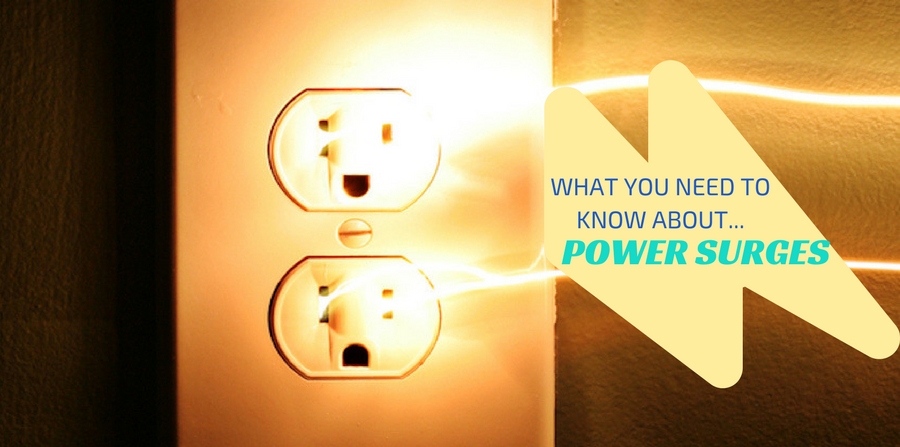
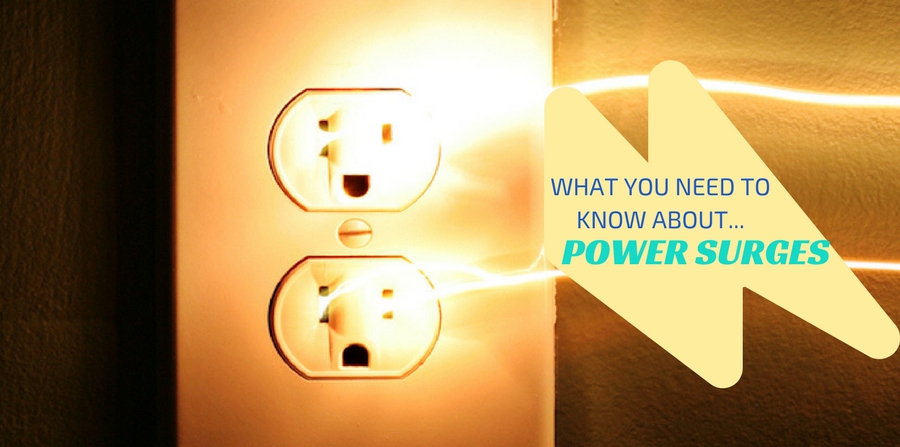
Los Angeles homes have more electronic devices plugged in and drawing power now than ever before. While modern electrical grids can supply power evenly and safely, power surges can result from several causes outside and inside the home.
Every homeowner should understand the basics about power surges and how to prevent them. Over time, even small power surges can cause damage to appliances and devices. Here’s a quick primer on everything you should know about power surges, and what you can do to stop them.

What is a Power Surge?
A power surge is an extremely fast and intense power spike in your home’s electrical current. Surges are also referred to as “transient voltage” because they’re caused by the sudden presence of an overvoltage traveling through an electrical system.
Wall outlets normally supply 120 volts of AC power, but the actual voltage level in the system fluctuates between 0-169 volts. Most home appliances and devices are designed to handle this small fluctuation but an increase above 169 volts is considered a power surge. When a surge travels into your home’s electrical current, the voltage spikes can be damaging and dangerous.
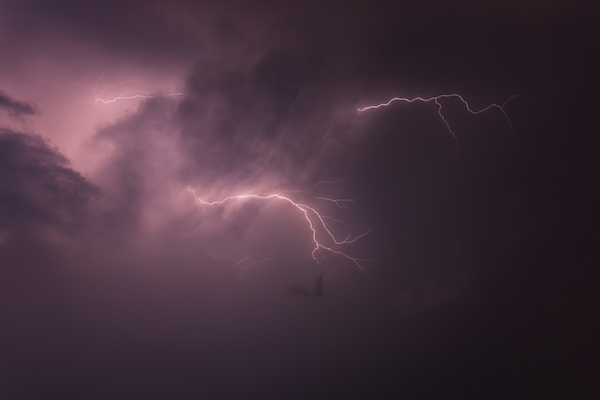
What Causes Power Surges?
Most people associate power surges with lightning. When lightning strikes near a power line, its energy discharge can boost the line’s electrical pressure by millions of volts. That electrical boost runs through the power line and into your house, and BOOM!
Luckily, lightning is one of the rarest causes of power surges. Most surges are a bit more mundane.
High-powered home appliances such as air conditioners and refrigerators require a lot of power to switch on. When these appliances request this power, they can inadvertently create a spike in your electrical system. These “switching surges” aren’t as severe as lightning surges, but they can still do damage and wear other circuits over time.
Surges can also come via the power company. Your electrical company occasionally switches grids to access different power sources. When these switches occur, there may be an accidental surge of electricity. A transformer malfunction or faulty transmission line can also create an unwanted power surge in your house.
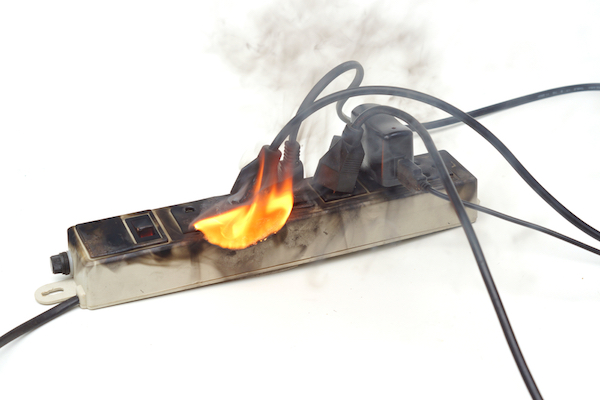
Why Are Surges a Problem?
Simply put, power surges with large voltage spikes can be damaging or dangerous. Surges can damage or destroy plugged-in electrical devices.
When too much electricity flows through an appliance at once, the appliance could overheat, break down, or even catch fire. This uncontained arc generates heat, which could melt or erode appliance components. A severe enough surge could even start a fire!
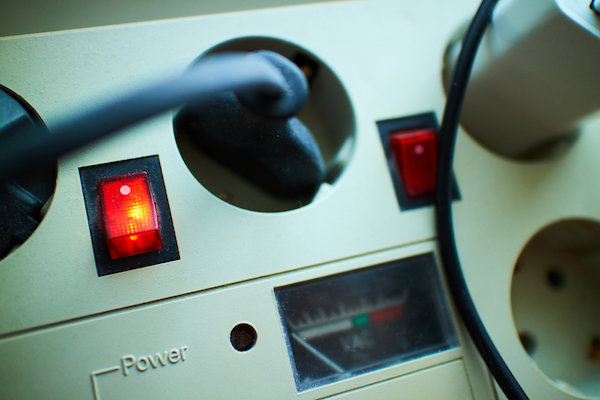
How Can I Prevent Electrical Surges?
The easiest and best way a homeowner can protect against power surges is to use a surge protector. Surge protectors are a type of power strip. They contain one input to be plugged into the wall, and several outlets to plug other devices into. Newer versions also have a power surge USB port to protect your USB devices while they are plugged in.
The difference between a power surge protector vs power strip is surge protectors absorb any excess energy running through them. During a surge, the protector redirects excess voltage toward the grounding wire to neutralize it. Service-panel surge protectors work the same way, but they fit directly onto your circuit breaker to prevent power surges from entering your home’s electrical system.
Reduce the Risk of Power Surges in Your Home
For more information on power surges, check out the National Institute of Standards and Technology’s informational booklet.
If you need help with any electrical problem, give Mike Diamond a call today. Our fully licensed electrical contracting professionals have the experience and know-how to diagnose and repair any problem with your electrical system. We can help prevent dangerous overvoltage from causing damage in your home.
The post Why Power Surges Happen and How to Prevent Them appeared first on Mike Diamond Services.
Did you miss our previous article…
https://www.ab-sessions-plumbing-building-services.com/?p=546
